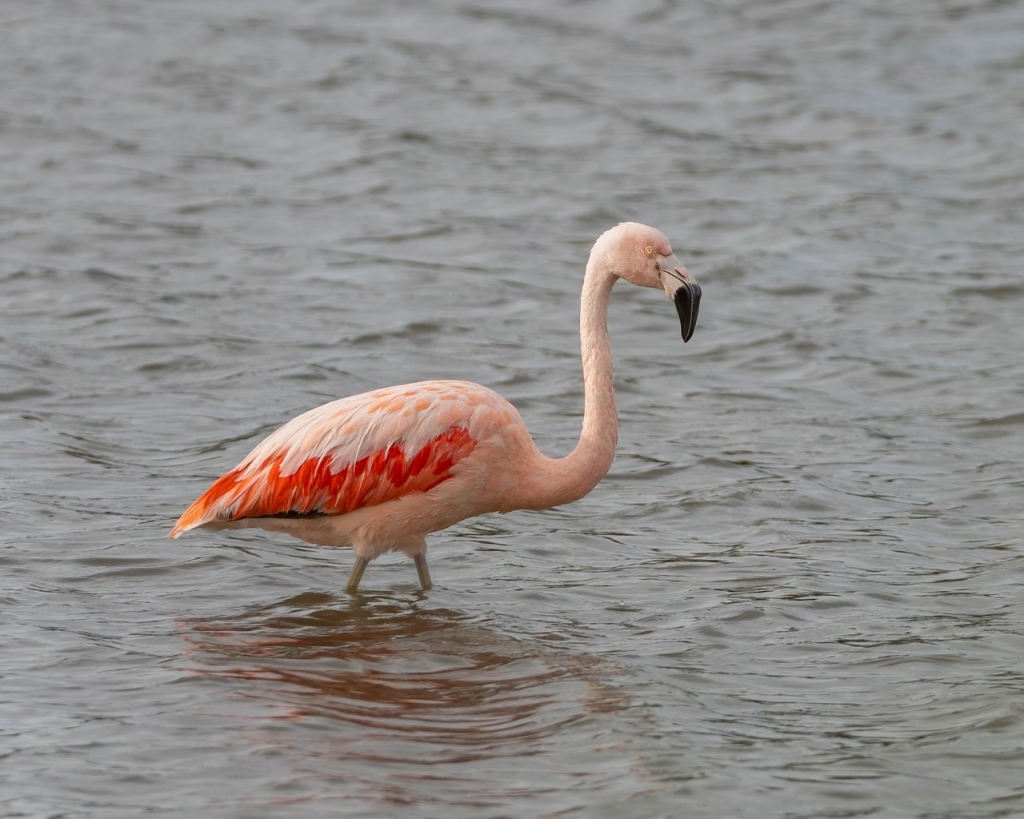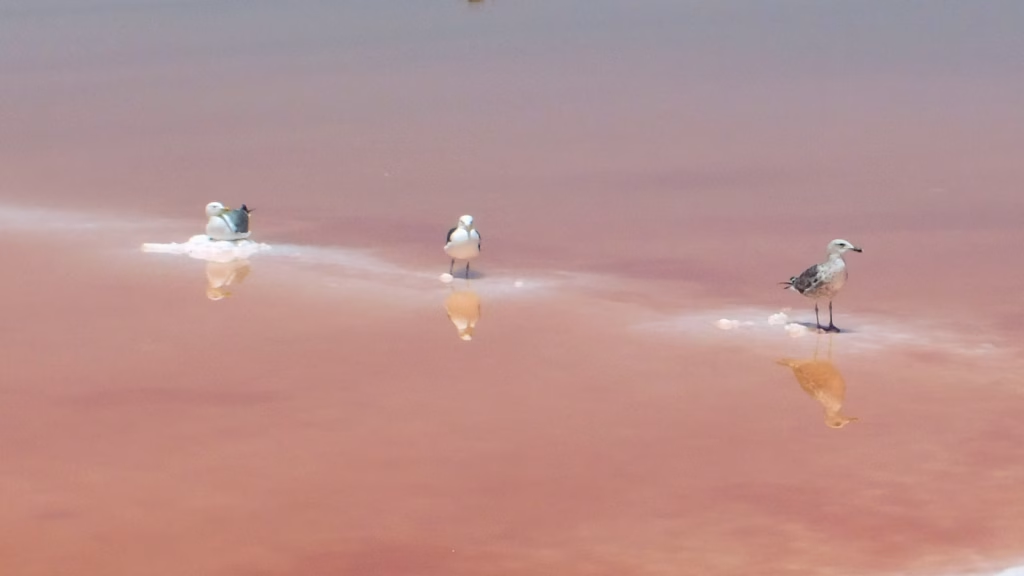If you’re staying in the eastern Algarve—say in or around Tavira—and you love nature, then bird-watching in the salt pans and tidal flats of the Ria Formosa offers a wonderfully immersive and peaceful way to experience the region. In this post I’ll walk you through why this place is special for birds, when you’ll get the best sightings, how to do it with minimal fuss, and what gear + mindset work best.
Why the Ria Formosa Region Is a Bird-Watcher’s Gem
- The Ria Formosa lagoon system spans some 18,000 hectares and is a designated Ramsar wetland of international importance.
- Its mix of salt marshes, salt pans, tidal flats, shallow lagoons, barrier islands and dune systems creates a mosaic of habitats — ideal for all kinds of birds, especially waders, water-birds and migrants.
- Particularly in the salt-pan areas around Tavira (e.g., Santa Luzia) you’ll find good numbers of waders, flamingos, avocets, spoonbills, stilts and more.
- Because the Ria lies along major migratory routes between Europe and Africa, spring and autumn bring extra species passing through or stopping over.
Best Times to Go & What to Expect
| Season | What you’ll see | Why it’s good |
|---|---|---|
| Spring (March–May) | Migrating species arriving, breeding displays begin, many resident birds active. | Mild temperatures, fewer crowds, lots of bird activity. |
| Autumn (September–October) | Migratory birds again, good for seeing species in transit, beautiful light. | Less hot than summer, more movement of birds, serene landscapes. |
| Winter (December–February) | Many resident waterbirds, some migrants from colder regions, quieter experience. | Lower visitor numbers, calm settings, good for photography. |
| Summer (June–August) | Possible but more challenging — midday heat, birds may be less visible. | Early mornings or late afternoons are best; choose cooler hours. |
Tip: Aim for early morning (just after dawn) or late afternoon (before dusk) for the best light and highest bird-activity. After the sun rises high (esp. in summer), birds often shelter and are harder to spot.
Top Bird-Watching Spots Near Tavira
You don’t have to venture far from Tavira to find wonderful bird-watching places — some of the best are just a short walk or cycle away.
- Tavira Salt Pans (Salinas de Tavira):
Just east of town, these shimmering salt pans stretch between Tavira and Cabanas. Early mornings are magical — the light reflects off the shallow pools, and you’ll often spot flamingos , stilts , avocets , and egrets feeding gracefully. A flat path follows the pans and makes for easy walking or cycling. - Santa Luzia Lagoon:
South-west of Tavira, the fishing village of Santa Luzia borders tidal flats that are full of life at low tide. You can walk the trail along the water’s edge toward Barril Beach , pausing to watch oystercatchers , sandpipers , and the occasional spoonbill sweep the shallows. - Cabanas Boardwalk & Forte de São João da Barra area:
Cabanas de Tavira sits on the edge of the Ria Formosa lagoon and has a wooden boardwalk perfect for bird-watching. From here, you can see herons , terns , and curlews moving through the tidal marshes, especially around sunrise and sunset. - Tidal Flats of the Ria Formosa:
For a longer outing, follow the coastal trail (the Ecovia do Litoral ) that runs east-west along the lagoon. It connects Tavira, Santa Luzia, and Cabanas — each stretch revealing different species and habitats depending on the tide.
Each of these places is reachable without a car , and you can easily fit them into a relaxed morning or evening stroll. Bring binoculars, a hat, and patience — the birds reward quiet observation.
What to Bring & How to Behave
- Binoculars (ideally 8× or 10×) and if you have a camera with zoom lens, even better.
- Comfortable walking shoes, sun-hat/sun-cream (salt pans reflect sunlight strongly).
- Water and snack; avoid disturbing birds (keep voices low, stay on paths).
- Respect tides and habitats: in some areas, bird nesting or feeding occurs, so stay a respectful distance.
- Be stealthy : Move slowly, scan quietly, avoid shadows over pans.
- If you can, choose a guided bird-watching trip: many local operators know the best spots, tides and species.
Easy Bird Species to Look Out For
- Greater Flamingo (Phoenicopterus roseus) — often in shallow salty lagoons.
- Black-winged Stilt , Avocet , Spoonbill — waders in salt pans.
- Little Tern , Audouin’s Gull , Oystercatcher — more visible at higher tides or coastal edges.
- Purple Swamphen — resident symbol species of the Ria.
- White Stork , herons and egrets — look for nests on poles/roofs or wading in shallow water.
Make It a Memorable Visit
- Go just after sunrise — the air is cooler, the light soft, and birds are most active before midday heat.
- Include both salt-pans and tidal flats/lagoons — you’ll see different species and behaviors.
- Bring a field-guide app or notebook and note what you see — even simple tracking adds to your experience.
- Combine bird-watching with a quiet moment at the end : perhaps a ferry ride to Ilha de Tavira or a café by the Gilão River, making the nature visit part of your holiday rhythm.
- Consider visiting in shoulder seasons (spring or autumn) when you’ll avoid the high summer crowds and still enjoy great birdlife.
Final Thoughts
Bird-watching in the Ria Formosa and its salt-pans is one of those experiences where the nature slows you down — you begin to see, wait, listen. For many travellers, it becomes a quiet highlight of their Algarve stay.
Whether you spot flamingos blazing pink in shallow pans, a spoonbill sweeping through the dawn light, or simply the quiet ripple of a wader’s footsteps across the water — these moments stay with you.
So next time you plan your stay around Tavira, leave space in the schedule for the birds. Pack your binoculars, come early, walk softly — and let the lagoon’s rhythms carry you a little outside the usual holiday pace.
Happy bird-watching! 🐦









